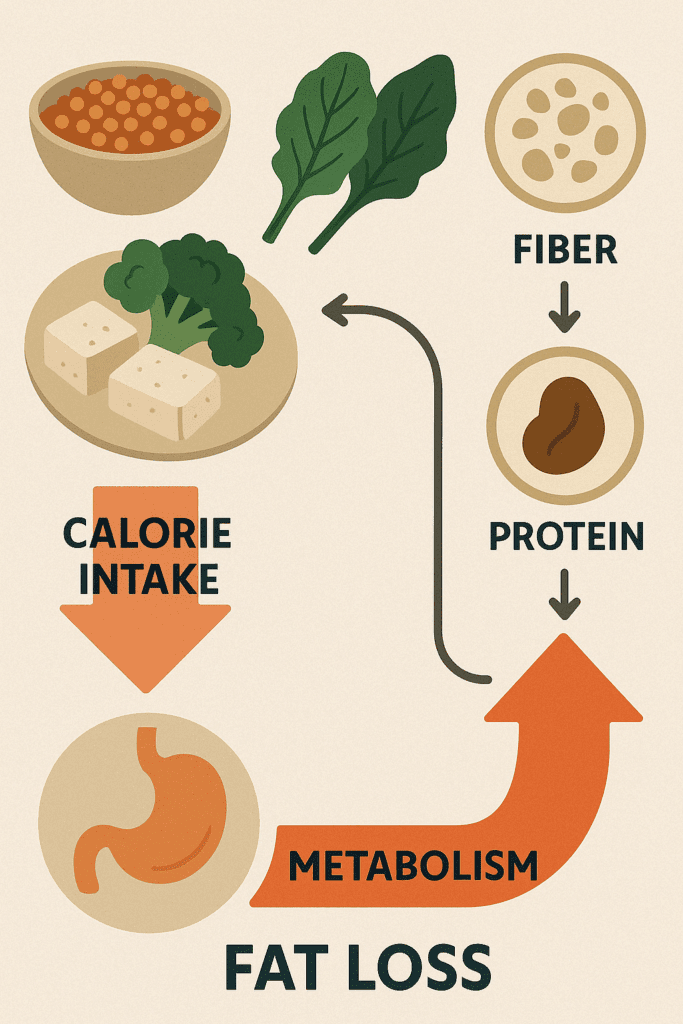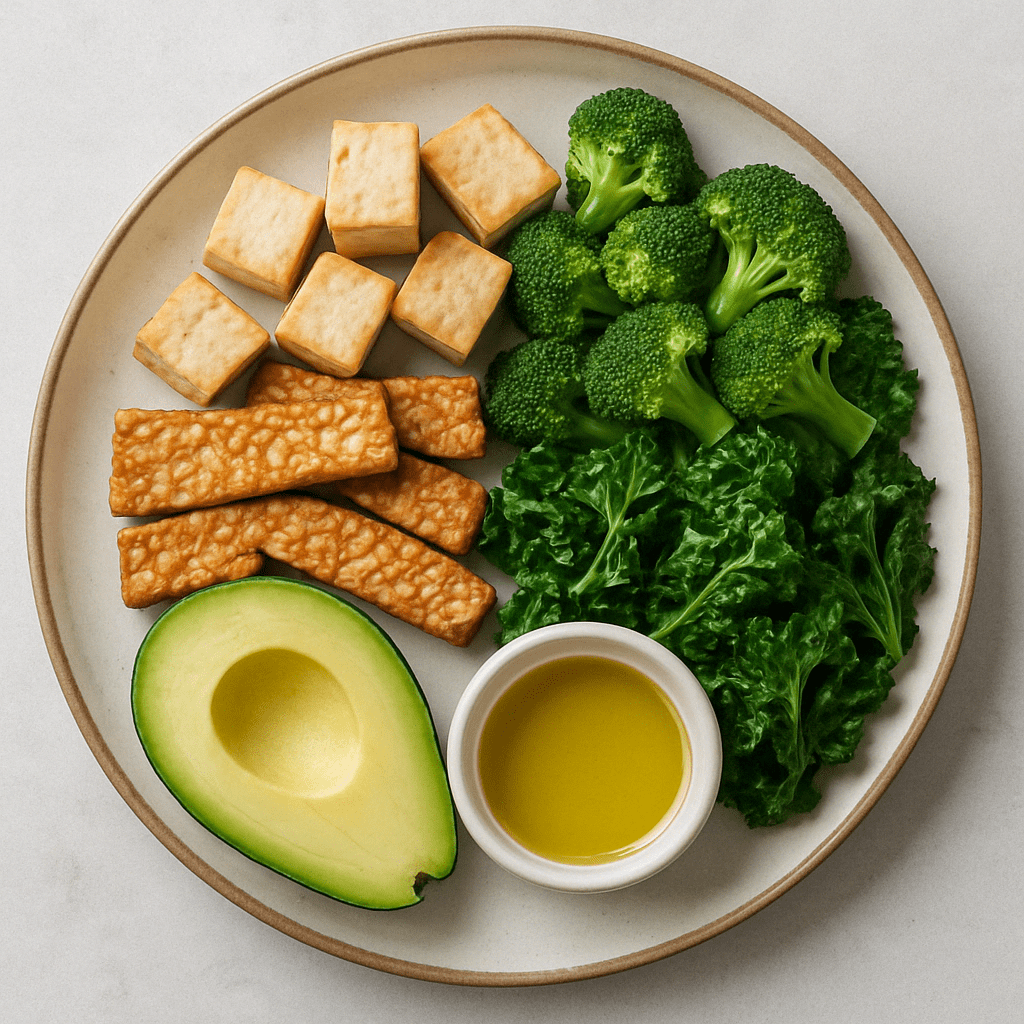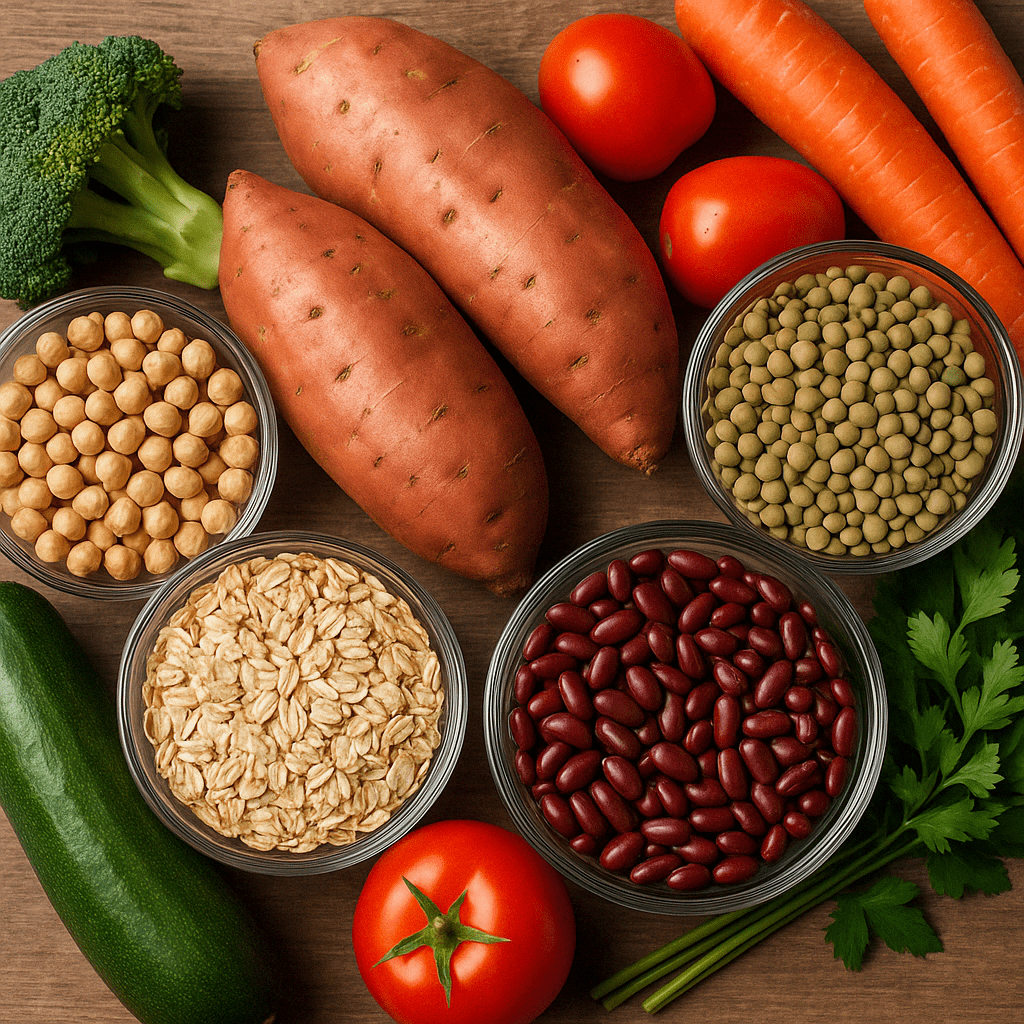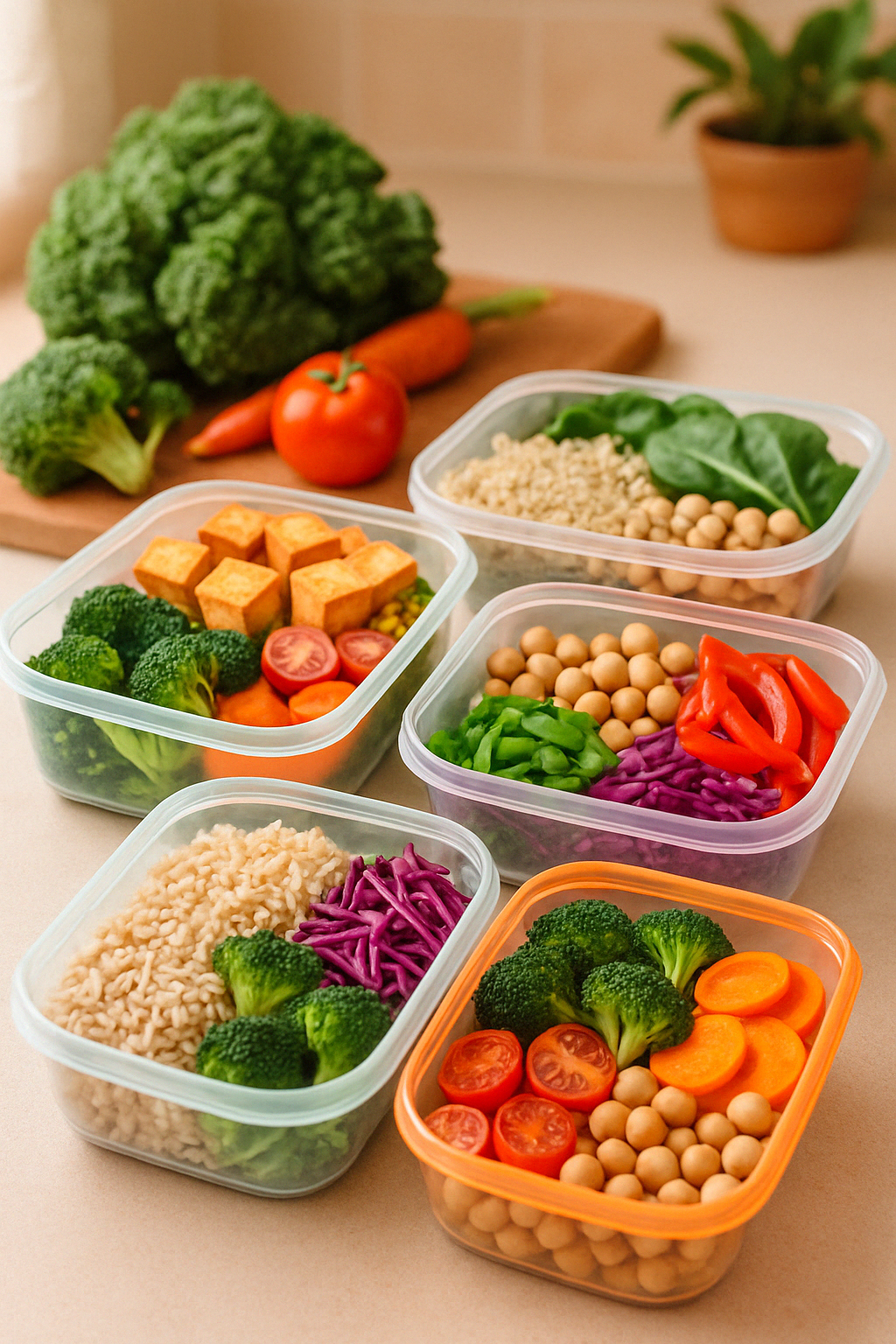In today’s fast-paced world, finding sustainable and effective ways to support long-term health and weight management can feel overwhelming. Meal prep has emerged as one of the most practical strategies to not only save time and money, but also to achieve consistent, nutritious eating patterns that foster real results. For those pursuing fat loss, meal prep to lose weight offers a structured yet flexible approach that empowers individuals to control their ingredients, portion sizes, and overall food choices without relying on last-minute, less healthy alternatives.
You may also like: When Does Your Body Start Burning Fat? Understanding the Science of Fasting and the Best Time to Break Your Fast for Weight Loss
While the market is flooded with generic advice, expert-approved lunch meal prep ideas for weight loss provide a science-backed foundation that goes beyond quick fixes or unsustainable dieting trends. This article dives into the strategic planning behind successful fat loss meal prep, offering insights into the nutritional science of satiety, metabolic balance, and energy control. By understanding the nuances of healthy lunch meal prep for weight loss, including how to design meals for sustained energy and fullness, readers can take the guesswork out of lunchtime decisions.
Why Lunch Matters Most in Weight Management
When it comes to optimizing your metabolism, regulating hunger hormones, and avoiding late-day cravings, lunch plays a surprisingly central role. Unlike breakfast, which may be skipped or rushed, and dinner, which often involves social eating or larger portions, lunch is the anchor point of daytime energy. Structuring lunch with well-balanced macronutrients can help prevent the blood sugar dips that trigger overeating later in the day.
Healthy lunch meal prep for weight loss should emphasize fiber-rich vegetables, lean plant-based proteins, healthy fats, and slow-digesting carbohydrates. This balance not only fuels your afternoon productivity but also promotes the kind of metabolic consistency that supports fat burning. For women, in particular, female meal prep for weight loss may need to account for hormonal fluctuations and nutritional demands that vary throughout the month, making consistency even more vital.
Additionally, from a behavioral standpoint, preparing lunch ahead of time limits spontaneous, calorie-dense choices that can undermine even the most well-intentioned eating plans. When healthy options are already portioned and ready to go, the decision-making barrier is significantly lowered, reducing the likelihood of falling back on less optimal foods.

The Science Behind Fat Loss Meal Prep
The effectiveness of fat loss meal prep stems from its ability to create a caloric deficit without compromising nutritional quality. Successful weight loss occurs when energy expenditure exceeds intake, but the quality of that intake profoundly influences hunger, energy, and body composition. Skipping meals or relying on ultra-low-calorie options often backfires, leading to metabolic slowdown or rebound overeating.
By contrast, meal prep recipes for weight loss lunch that prioritize nutrient density can help you stay satisfied while gently lowering caloric intake. Fiber, water volume, and protein play key roles here. Fiber-rich ingredients like lentils, chickpeas, and cruciferous vegetables expand in the stomach, increasing fullness without adding excess calories. Lean plant proteins like tofu, tempeh, and quinoa deliver satiety while preserving lean muscle mass, which is critical for maintaining a healthy metabolic rate during weight loss.
A growing body of research also shows that consistent, planned eating patterns enhance hormonal regulation, particularly insulin sensitivity and leptin signaling—both of which are critical to appetite control and energy balance. In this light, even easy meal prep lunches for weight loss can have significant physiological effects when done with intention and awareness.
Balancing Macros for Sustained Fullness and Fat Loss
Macronutrient balance is the foundation of any effective meal prep plan. While low-carb and ketogenic diets have gained attention for their potential to accelerate fat burning, their sustainability and long-term effects remain topics of ongoing scientific investigation. Understanding the differences between a ketogenic diet vs low carb plan is essential when designing a strategy that supports both weight loss and overall health.
A keto diet, by definition, induces a state of ketosis—a metabolic shift where the body burns fat for fuel due to the absence of sufficient carbohydrates. However, not all low-carb diets are ketogenic. A low carb diet can still include moderate amounts of fruits, whole grains, and legumes, which are often eliminated on stricter keto plans. This distinction matters greatly, especially for individuals seeking a whole-food, plant-based approach. The question “is keto a low carb diet?” reveals that while all ketogenic diets are low carb, not all low-carb diets are ketogenic.
Additionally, the question “is a keto diet sustainable?” must be examined critically. While keto may yield short-term weight loss, especially in the form of water loss and reduced appetite, its long-term health outcomes are less clear, particularly when high intake of saturated animal fats replaces carbohydrates. Instead, moderate-carb, high-fiber approaches using plant-based sources tend to offer better sustainability and nutritional adequacy.

Beginner Weight Loss Meal Prep Tips That Actually Work
For those just starting out, beginner weight loss meal prep can seem daunting. Yet, the key to success lies in simplicity and consistency. Rather than trying to overhaul your entire diet overnight, begin by prepping just one or two lunch recipes per week that align with your goals. Focus on meals that are easy to batch cook, store well, and taste just as good reheated—like lentil stew, quinoa salad with roasted vegetables, or tofu stir-fry with brown rice.
Make use of smart kitchen tools like airtight containers, mason jars, and insulated lunch bags to keep meals fresh and convenient. Build a routine around shopping and prepping so it becomes part of your weekly rhythm. This not only reduces decision fatigue but also increases adherence to your nutrition plan. Remember, the best meal prep for losing weight isn’t the most complicated or trendy—it’s the one you can do consistently, week after week.
Meal Prep on a Budget for Weight Loss: Affordable and Effective
Contrary to popular belief, healthy eating doesn’t have to be expensive. Meal prep on a budget for weight loss can be both cost-effective and nutritionally robust when you focus on pantry staples and seasonal produce. Bulk purchases of whole grains, dried beans, frozen vegetables, and herbs can drastically cut costs while boosting meal variety and nutrition.
Planning meals around sales or coupons and cooking in larger batches also stretches your dollar further. Many of the most effective fat loss ingredients—like oats, lentils, sweet potatoes, and carrots—are incredibly affordable. When combined with flavorful, plant-based sauces or spices, these ingredients can be transformed into a variety of satisfying meals that don’t break the bank.
Not only does budget meal prep support financial well-being, but it also limits food waste and impulse purchases. When you know exactly what you’ll be eating each day, it’s easier to avoid unnecessary spending on convenience foods or eating out. In this way, economic mindfulness becomes part of a holistic, healthier lifestyle.

Easy Meal Prep Lunches for Weight Loss You Can Rely On
The best meal prep for losing weight often includes a mix of classic and creative recipes that you actually enjoy eating. The goal is to look forward to your meals, not dread them. Easy meal prep lunches for weight loss should combine flavor, texture, and satisfaction. Think spicy chickpea wraps with tahini sauce, Mediterranean bowls with hummus and tabbouleh, or black bean burrito bowls with avocado and lime.
One underappreciated strategy is to create “modular meals” using base components like cooked grains, greens, legumes, and sauces that can be combined in different ways throughout the week. This prevents flavor fatigue while keeping prep time to a minimum. By cooking just a few staple ingredients and rotating toppings and seasonings, you maintain variety without doubling your workload.
Even better, this approach aligns well with the principles of mindful eating, encouraging you to be present and intentional with your meals rather than rushing through them. Mindful lunch prep not only supports physical goals like fat loss but also fosters a healthier relationship with food and body image.
Comparing Keto and Low Carb Approaches in the Context of Meal Prep
It’s tempting to look at the popularity of keto and assume it’s the best option for fat loss. However, when comparing the ketogenic diet vs low carb approaches in real-world contexts like meal prepping, the differences become more pronounced. A keto diet typically requires strict tracking of carbs, often limiting them to fewer than 50 grams per day. This restricts many high-fiber plant foods that are otherwise beneficial for health and digestion.
In contrast, a low carb diet allows for a wider variety of ingredients while still limiting refined sugars and excess starches. This opens the door for incorporating more nutrient-dense foods like beans, lentils, berries, and even small portions of whole grains. While asking “is keto no carbs?” helps highlight the restrictive nature of the diet, it’s more accurate to say that keto is very low in carbs—not completely devoid of them.
The question “is keto a good diet” depends largely on individual needs, preferences, and metabolic health. Some people thrive on lower-carb, higher-fat diets, especially those with insulin resistance. However, for the general population, especially those seeking sustainable weight management, more inclusive low carb options that incorporate fiber and plant diversity may offer a healthier long-term path.

Tailoring Meal Prep for Women: Unique Needs and Nutritional Considerations
Female meal prep for weight loss often involves unique physiological considerations. Women experience monthly hormonal shifts that can influence appetite, energy levels, and even cravings. Designing lunch meal prep ideas for weight loss that accommodate these changes can enhance consistency and reduce feelings of restriction or failure.
Increased iron needs, particularly for premenopausal women, make it important to include foods like leafy greens, lentils, and fortified grains in meal prep recipes. Calcium and magnesium-rich foods also support hormonal balance, while omega-3s found in flaxseeds and walnuts may help mitigate inflammation and mood swings.
In addition, women who engage in physical activity or resistance training may benefit from slightly higher protein intake to support muscle repair and fat loss. Including a variety of plant-based proteins across meals helps meet this need without relying on animal products. For many, a balanced approach to meal prep that includes carbohydrates, protein, and healthy fats supports not only weight loss, but also hormonal health and overall vitality.
Lunch Prep with Long-Term Impact: Building Sustainable Habits
Meal prep lunches for weight loss aren’t just about reaching a number on the scale—they’re about reshaping your lifestyle. Building sustainable habits through weekly prep builds confidence, saves time, and fosters a proactive approach to health. By gradually mastering the art of meal planning and execution, you create an environment that supports your goals without requiring daily willpower.
Sustainability also comes from flexibility. While it’s helpful to have structure, rigidity can be counterproductive. Allow space in your routine for spontaneous meals, social eating, and experimentation. This balance keeps you mentally refreshed and prevents burnout, making your prep habits more durable in the long run.
Moreover, by using meal prep as a tool for self-care rather than punishment or restriction, you reinforce a positive mindset around food and health. You become the architect of your own wellness, using evidence-based strategies rather than trends or extremes to support your goals.

FAQ: Smart Meal Prep for Weight Loss
1. What are some overlooked benefits of lunch meal prep ideas for weight loss beyond saving time?
Lunch meal prep ideas for weight loss offer more than just time-saving advantages. One majorbenefit is cognitive relief—removing the burden of daily meal decisions reduces decision fatigue, freeing up mental space for other tasks. Meal prep also supports better digestion when meals are thoughtfully composed with fiber and balanced macros, allowing for more efficient nutrient absorption. Additionally, prepped lunches can enhance social wellness, as they reduce the reliance on unpredictable restaurant meals that may lead to guilt or peer pressure. Over time, consistent lunch planning becomes a reinforcing habit that builds identity around being someone who values structure and well-being.
2. How can fat loss meal prep support long-term behavioral change rather than just short-term dieting?
Fat loss meal prep helps retrain your brain and palate by exposing you to nourishing, home-cookedmeals that create a stable dietary environment. Instead of reacting to hunger with impulse choices, you become proactive and intentional about food decisions. Behavioral psychology supports this: repetition of structured choices leads to habit formation, particularly when cues (like prep containers or set prep days) are consistent. This makes fat loss more sustainable, as your routines support your goal effortlessly over time. You also develop deeper awareness of hunger and fullness cues, which promotes long-term weight regulation without obsessive tracking.
3. What specific mistakes do people make when trying beginner weight loss meal prep for the first time?
A common error in beginner weight loss meal prep is overcommitting to complex recipes, which leadsto burnout and food waste. Many also neglect to plan for flavor variation, resulting in boredom and diminished adherence. Another issue is portion misjudgment—some underestimate the calorie content of “healthy” ingredients like nuts or dressings, sabotaging progress. Additionally, beginners often fail to adjust prep quantities based on evolving schedules, causing meals to spoil or lead to unnecessary eating. The key is starting small, focusing on two to three balanced meals per week, and adjusting based on real-life feedback.
4. How can healthy lunch meal prep for weight loss accommodate social or workplace environments?
Healthy lunch meal prep for weight loss can be both discreet and adaptable to communal settings.Prepping meals that resemble restaurant-quality dishes—such as quinoa bowls, wraps, or noodle salads—can ease social discomfort about bringing food from home. Using attractive, compartmentalized containers also helps normalize the experience. To reduce disruption, choose items that don’t require reheating or have strong odors. Moreover, when colleagues see your consistent, vibrant meals, it often sparks curiosity and can lead to shared wellness conversations, subtly reinforcing your own habits and creating a ripple effect in the environment.
5. What are some unconventional ways to make meal prep on a budget for weight loss exciting and creative?
Meal prep on a budget for weight loss can be surprisingly dynamic when you lean into global cuisines.Dishes like dal from India, Mexican bean salads, or Mediterranean lentil bowls use inexpensive staples but offer rich flavor diversity. Incorporating “theme weeks” based on different countries or seasonal ingredients also keeps things fresh. Another tip is repurposing leftovers creatively—for example, turning a batch of roasted vegetables into a wrap, soup, or grain bowl across different days. Budget meal prep doesn’t have to mean bland or repetitive; it thrives on resourcefulness and a sense of culinary play.
6. Are there psychological advantages to choosing easy meal prep lunches for weight loss over spontaneous eating?
Absolutely. Easy meal prep lunches for weight loss remove the uncertainty around what to eat,reducing anxiety and cognitive load. This predictability enhances feelings of self-efficacy, a psychological driver of behavior change. People who feel capable and in control are more likely to stick to health routines. Moreover, having meals ready reduces the temptation to justify poor food choices with excuses like “I didn’t have time.” Over time, this builds confidence and self-trust, which are foundational for developing a lasting, healthy relationship with food.
7. What meal prep strategies work best for women managing hormonal changes throughout their cycle?
Female meal prep for weight loss can benefit from cycle-syncing, where meals are tailored todifferent phases of the menstrual cycle. For example, during the luteal phase, appetite often increases and cravings for comfort foods spike—so prepping warming dishes rich in complex carbs and magnesium (like sweet potato and spinach curry) can help balance mood and energy. In contrast, follicular and ovulatory phases may benefit from lighter, protein-rich meals like chickpea salads or tofu stir-fries. Tracking cycle symptoms and adjusting meal prep accordingly helps women feel more supported rather than restricted.
8. How can meal prep recipes for weight loss lunch be adapted to support muscle retention during weight loss?
To retain muscle while losing fat, meal prep recipes for weight loss lunch should emphasize proteindistribution throughout the day. Including 20–30 grams of protein per lunch—from plant-based sources like tempeh, seitan, lentils, or protein-fortified pastas—can preserve lean mass. Adding resistance training and pairing protein with a modest amount of carbs also supports muscle recovery. Furthermore, incorporating anti-inflammatory fats like olive oil or walnuts helps with tissue repair. Balancing nutrients while ensuring meals are satisfying makes adherence easier, especially for individuals pursuing both body composition and fat loss goals.
9. What overlooked ingredients enhance the best meal prep for losing weight without adding extra calories?
Herbs, spices, vinegars, and citrus are game-changers in creating the best meal prep for losingweight. Ingredients like smoked paprika, sumac, ginger, or fresh basil can radically elevate a simple dish without affecting caloric content. Fermented additions like kimchi or sauerkraut also provide gut health benefits and tangy flavor for very few calories. Using vegetable broths as cooking bases instead of oil or cream can significantly lower the calorie density of soups and stews. These small enhancements can transform a basic meal into a standout experience while supporting fat loss meal prep objectives.
10. What are the social and cultural challenges that may arise with meal prep to lose weight, and how can they be addressed?
Meal prep to lose weight can sometimes create tension in social settings, especially where shared eals or cultural foods are central to community life. The perception of “eating differently” might trigger comments or judgments from others. To navigate this, it helps to focus on inclusive meals that align with your plan but don’t alienate others—such as a plant-based curry everyone can enjoy. Openly sharing your goals without moralizing food choices fosters understanding. Flexibility is also key: you can still participate socially by portioning or adjusting meals rather than declining them altogether. Over time, leading by example often encourages those around you to consider healthier habits too.

Final Thoughts: Why Smart Meal Prep Is the Best Meal Prep for Losing Weight
Smart, intentional meal prep is more than a diet strategy—it’s a sustainable lifestyle shift grounded in planning, self-awareness, and nutritional wisdom. Whether you’re exploring beginner weight loss meal prep, adapting a plan for hormonal balance, or comparing the ketogenic diet vs low carb frameworks, the core principles remain: balance, consistency, and personalization.
The best meal prep for losing weight is the one you can maintain without feeling deprived or overwhelmed. It offers nourishment that satisfies both body and mind, with flexibility to adjust as your needs evolve. For those wondering, “is keto a low carb diet?” or “is a keto diet sustainable?” the answer lies in context. For some, keto may be an effective tool; for others, a plant-centered, moderate-carb approach will offer better long-term adherence and health benefits.
Ultimately, smart meal prep isn’t about perfection—it’s about progress. When you prepare with intention, informed by science and guided by your unique needs, you not only lose weight effectively but also cultivate a healthier relationship with food. That’s the true power of smart, sustainable meal prep.
Was this article helpful? Don’t let it stop with you. Share it right now with someone who needs to see it—whether it’s a friend, a colleague, or your whole network. And if staying ahead on this topic matters to you, subscribe to this publication for the most up-to-date information. You’ll get the latest insights delivered straight to you—no searching, no missing out.
Further Reading:
Weight loss: Feel full on fewer calories
35 Simple Ways to Cut Lots of Calories
10 ways to cut 500 calories a day
Disclaimer
The information contained in this article is provided for general informational purposes only and is not intended to serve as medical, legal, or professional advice. While NewsHealthWatch strives to present accurate, up-to-date, and reliable content, no warranty or guarantee, expressed or implied, is made regarding the completeness, accuracy, or adequacy of the information provided. Readers are strongly advised to seek the guidance of a qualified healthcare provider or other relevant professionals before acting on any information contained in this article. NewsHealthWatch, its authors, editors, and contributors expressly disclaim any liability for any damages, losses, or consequences arising directly or indirectly from the use, interpretation, or reliance on any information presented herein. The views and opinions expressed in this article are those of the author(s) and do not necessarily reflect the official policies or positions of NewsHealthWatch.

